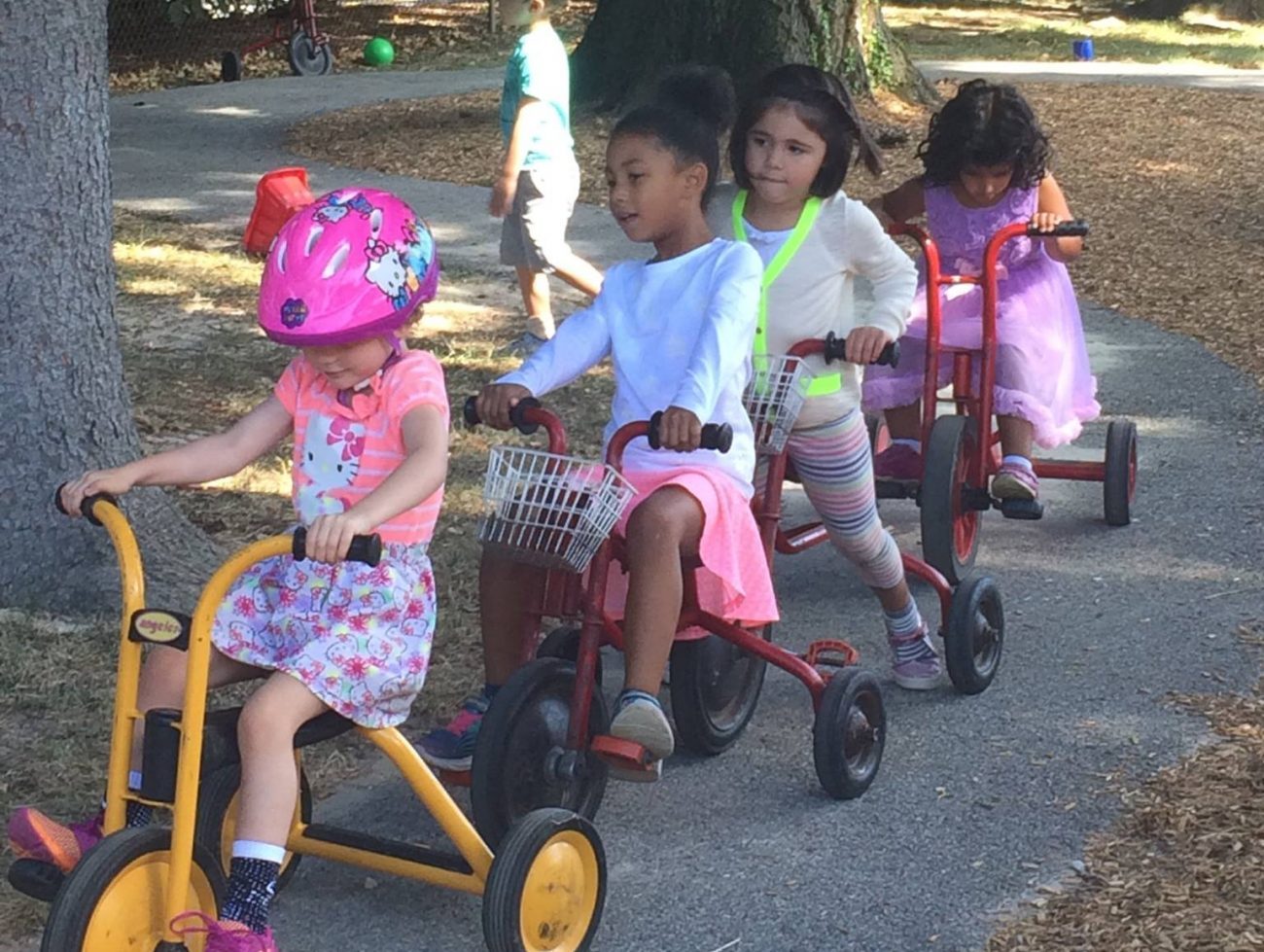How Play Helps Kids Learn
Play is good for kids, both for learning and their health. Find out why from experts at the Phebe Anna Thorne School.

“In play, a child is above his average age, above his daily behavior: In play it is as though he were a head taller than himself.” — Lev Vygotsky
Many parents wonder, as they visit academically-oriented preschools: What has happened to the role of play in early education? Educators and researchers agree that including play in a child’s day is good for both their learning and their health. At the Phebe Anna Thorne School, play is a cornerstone of their educational philosophy. The school serves toddlers and preschoolers in their building on the Bryn Mawr campus, and has a kindergarten center on the Haverford College campus.
“Play is the vehicle through which children are able to absorb information and develop creative thinking and communication skills,” said Kate Brown, Director of the Kindergarten Center. “It’s very rewarding to see a child use the skills and knowledge they were given, even months before, in a game with a friend. This child is being set up for success for the rest of their lives,” she said.
Preschoolers participate in two extended periods of play (90 minutes inside and an hour outside), as well as in more structured activities. The playground beside the building is large and shady.
Thorne’s full day kindergarten program also incorporates play. Children have three recesses, in addition to play times in the classroom. Kindergartners have the opportunity to explore many areas of the Haverford College campus, from the duck pond and track to the art gallery and observatory. Teachers in the program stress the importance of play in the development of language, collaboration, and problem solving.
The Thorne philosophy promotes age-appropriate play throughout the day and encourages children to grow socially, emotionally, and academically. Language is critical.
“In a developmentally-appropriate, play-based environment, children are better able to absorb and retain information,” says lead teacher Rachel Stern. “Here they learn language skills that prepare them to negotiate, collaborate, and self-advocate. They are confident in their own individual learning style. Generating ideas through play sets them up for future academic success when they need to generate thoughts for essays, develop persuasive arguments for theses, and the like.”
How can you incorporate more time for play into your routine at home? Lead by example and put down your own electronics. Join your children and let them direct the play. Make capes from blankets and “save the world,” build towers with blocks, or have a tea party with stuffed animals. Your children will be developing their imaginations, verbal skills, and engineering abilities, and you’ll be sharing priceless bonding time with them.
If you’re interested in a play-based early education, explore a place like Thorne. The mission of Thorne is to provide play-based, developmentally appropriate, child-centered programs for toddlers, preschoolers, and kindergartners. Want more information on the Phebe Anna Thorne school and their curriculum? You can learn more about the Phebe Anna Thorne School on their Profile Page and their Facebook Page. Contact Amanda Ulrich for enrollment information at 610-526-7913.
This story supports the Main Line Parent Community with photographs courtesy of Phebe Anna Thorne School.




NO COMMENTS